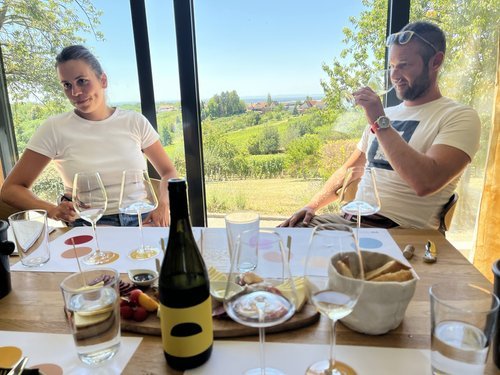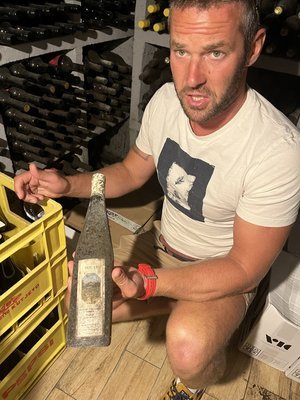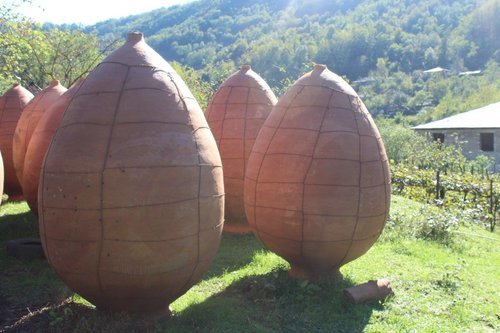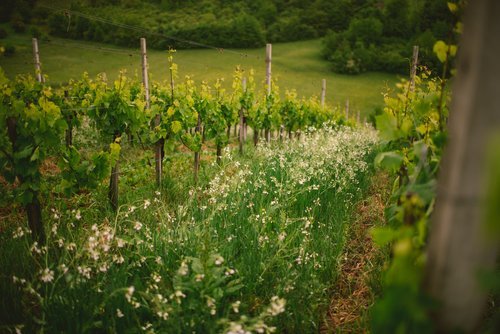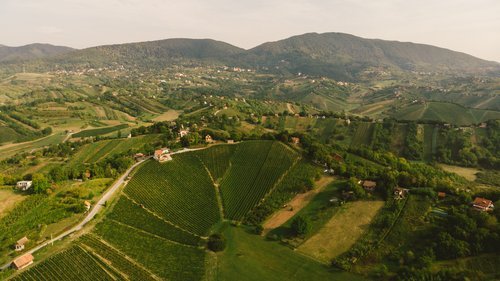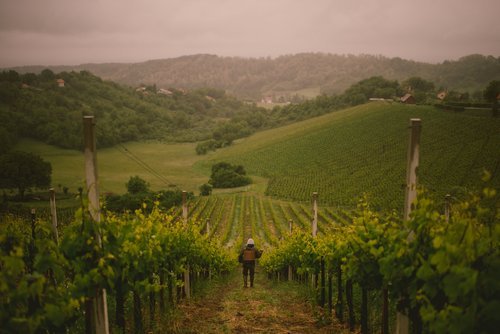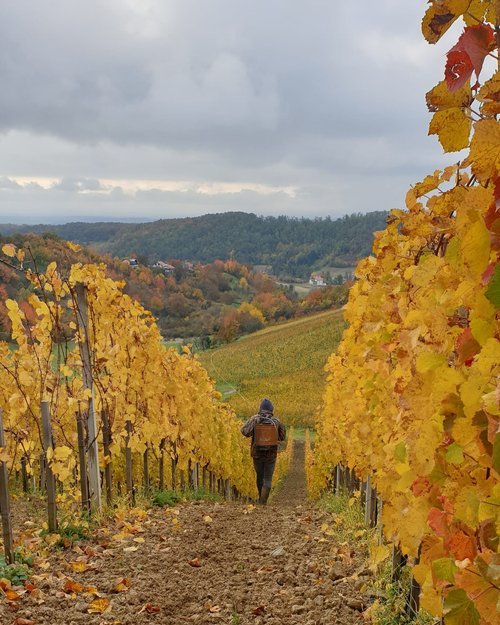Wine Club: Back to School
And we’re back to school. There is a little bit of nostalgia every year when this time comes around- brisk mornings, hot afternoons and the smell of freshly sharpened pencils (or I guess these days freshly charged tablets 🥴). But I guess from my perspective this time of year is one of my most exciting in the wine biz…I’m constantly looking to expand our selections during this time of year and find new wines to pepper into the shelves for our clients and myself! So we’re heading back to school on this one because most recently one of my distributor has been dabbling in wines from Croatia and I know very little about this region so now let’s do some digging!
Just across the Adriatic Sea in Croatia harbors a deep rooted history in winemaking going back at least 2,400 years so roughly 4000 BC ish. Vines were first planted there in the Bronze age with the Illyrians leading to the birth of many native varietals. Today only about 130 native varieties remain after phylloxera devastated most European vineyards at the beginning of the 20th century with most remaining planted in pocket-sized parcels in small family vineyards.
There are over 300 geographically defined winemaking regions but for simplicity sake we can categorize them into 3 main regions.
Dalmatia Islands-These native varieties are maintained amongst a diverse growing landscape; from vineyards set seaside along the narrow coastal belt to high & steep slopes cut into the rock. Along with the island of Hvar which has the world’s longest continually cultivated vineyard dating back to 400 BC, the Dalmatia islands are home to 100 of the native varieties we mentioned above.
Istria- the northwestern peninsula of the country with an extensive coastline but a hilly topography with iron rich soils and a variance of microclimates.
Continental- the larger landmass of the country just far enough inland to create a slightly cooler climate in the Croatian Uplands near Zagreb down to the further eastern flats near the Danube & Slavonia for a more moderate climate. This is where we will be focusing our selections this month. And trust me- we will be doing some more croatian exploration of the other regions in the future too!
Cheers
WINE CLUB: 2 Bottles
Voštinić- Klasnić • Moslavina Croatia
Voštinić — Klasnić is located on a small hill near Ivanić Grad, in the region of Moslavina- just far enough outside the hustle and bustle of Zagreb. The winery has been in the family since 1936 when Tomislav’s great grandfather put in the first plantings of Škrlet- some to this day are the oldest living vines in existence. Tomislav (aka Tomba) inherited the vineyards from his great grandfather and maintains a strictly organic farming practice and native yeast fermentations. They call Tomba the ‘Young Prince of Škrlet’ as he continually plants more vines and is constantly working to show how this once almost extinct variety has so much versatility and drinkability for people to fall in love with just like his family did.
‘Škrlet’ • Škrlet ((pronounced Shkirlet)
This wine is young and playful with refreshing fruit, flowery aromas and subtle herbal notes. It is, as Tomba’s intention, an extremely versatile wine for this time of year with hot days, slightly cooler nights and our last long days as we move into the fall season.
‘Epitet’ • Cabernet Franc, Cabernet Sauvignon, Merlot
While these aren’t ‘indigenous’ grape varieties, these classic Bordeaux grapes have made their way into some of the most unsuspecting regions and yet the Moslavina region is actually a great place for them! With relatively poor soil content, warm summer days and slightly cooler & windy nights these grapes maintain a juiciness and boldness along side of a balanced acidity and tannin. This little blend I think will be quite popular in the coming months with brambly fruit & spice that you could easily pop onto the dinner table or bring over to a friend’s house for cocktail hour.
WINE CLUB: 3-4 Bottles
Tomac Winery • Plešivica Croatia
In the Tomac family, wine and their vineyards is pretty much it. Their region, Plešivica, is located in the western part of Central Croatia, 30 kilometers southwest of Zagreb. The Tomac family has been making wine for over 100 years with vineyards totaling to 9 hectares with many vines up to 80 years old! In 2018 they started integrating biodynamics and never looked back- they consider it one of the best decisions they ever made.
‘Rockstar’ • Riesling
All biodynamically farmed with that continental climate we mentioned earlier- so mild to high temps in the growing season with consistent rains. This riesling lies along an extremely mineral rich outcrop of limestone and marl- just perfect for Riesling if you know what you are doing. Which I think these guys do plus they get a little bonus with an increase in elevation of this vineyard site. This riesling while aged in Slavonian oak still achieves a natural balance of acidity and ripeness that is incredibly authentic and loveable.
‘Marany White’ • Roter Veltliner, Gewurtztraminer, Pinot Blanc. Sauvignon Blanc
Some skin contact on this one- This wine is fermented and macerated on the skins in the Qvervi (Georgian-made clay amphoras) for up to 4 weeks. Then aged in wooden casks for 1 year before bottling. The result is a vivid wine that is multi-dimensional without the pretention- it just has so much going on to explore and come back to…to just taste alongside a changing season in which I believe it will show so much diversity. Chill it, sit with it, eat with it, sit fireside on the perfect fall day with it- I think you’ll catch my drift.


